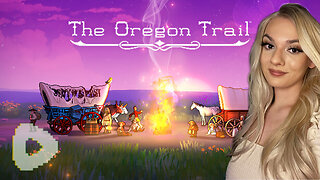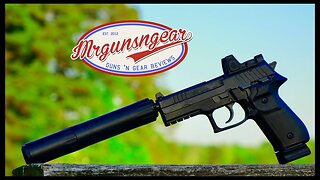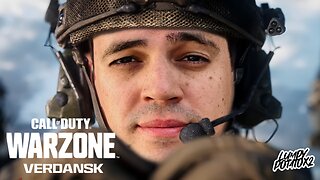Premium Only Content

Omaha Beach Normandy | France
#omaha Beach was one of five beach landing sectors designated for the amphibious assault component of Operation #overlord during #wwii . On June 6, 1944, the Allies invaded German-occupied France with the Normandy landings.[1] "Omaha" refers to an 8-kilometer (5 mi) section of the coast of Normandy, France, facing the English Channel, from east of Sainte-Honorine-des-Pertes to west of Vierville-sur-Mer on the right bank of the Douve River estuary. Landings here were necessary to link the British landings to the east at Gold with the American landing to the west at Utah, thus providing a continuous lodgement on the Normandy coast of the Bay of the Seine. Taking Omaha was to be the responsibility of United States Army troops, with sea transport, mine sweeping, and a naval bombardment force provided predominantly by the United States Navy and Coast Guard, with contributions from the British, Canadian and Free French navies.
The primary objective at Omaha was to secure a beachhead eight kilometers (5.0 miles) deep, between Port-en-Bessin and the Vire River, linking with the British landings at Gold to the east, and reaching the area of Isigny to the west to link up with VII Corps landing at Utah. The untested American 29th Infantry Division, along with nine companies of U.S. Army Rangers redirected from Pointe du Hoc, assaulted the western half of the beach. The battle-hardened 1st Infantry Division was given the eastern half.
Opposing the landings was the German 352nd Infantry Division. Of its 12,020 men, 6,800 were experienced combat troops, detailed to defend a 53-kilometer (33 mi) front. The German strategy was based on defeating any seaborne assault at the water line, and the defenses were mainly deployed in strongpoints along the coast.
The Allied plan called for initial assault waves of tanks, infantry, and combat engineer forces to reduce the coastal defenses, allowing larger ships to land in follow-up waves. But very little went as planned. Difficulties in navigation caused most of the landing craft to miss their targets throughout the day. The defenses were unexpectedly strong, and inflicted substantial casualties on landing U.S. troops. Under intense fire, the engineers struggled to clear the beach obstacles; later landings bunched up around the few channels that were cleared. Weakened by the casualties taken just in landing, the surviving assault troops could not clear the exits off the beach. This caused further problems and consequent delays for later landings. Small penetrations were eventually achieved by groups of survivors making improvised assaults, scaling the bluffs between the most well-defended points. By the end of the day, two small isolated footholds had been won, which were subsequently exploited against weaker defenses further inland, achieving the original D-Day objectives over the following days.
Destination:Everywhere was created to chronicle our family's memories of traveling. We're a family of four 👨👩👧👦 who lived in Stuttgart, Germany for four and a half years. Swabia is a perfect location to reach most of Europe, so we used every opportunity to travel to locations such as France, Italy, United Kingdom, Ireland, Scotland, England, Belgium, Hungary, Poland, Czech, Croatia and much more.
We traveled by Car 🚗, Plane, ✈️, Train 🚆 and 🚌 to see as much of Europe as possible. From historic sites to beautiful cities and from country mountains to gorgeous beaches, we have packed in traveling in Europe-- and rather inexpensively. We're big fans of AirBnB and Booking.com for our lodging; TrainlineEU, EasyJet and Ryan Air for traveling and we did a lot of driving throughout Europe.
We appreciate our friends and fans for watching our videos! For more information about our adventures, follow us on Social Media 👇
📷 http://www.instagram.com/we.explore.everywhere
👍 http://www.facebook.com/comeseeitall
🐦 http://www.twitter.com/dest_everywhere
🎵 http://www.tiktok.com/@we_explore_everywhere
🌐 http://www.comeseeitall.com
-
 LIVE
LIVE
MissesMaam
7 hours agoCan we survive the Oregon Trail ? 💚✨
231 watching -
 12:19
12:19
Mrgunsngear
1 day ago $8.34 earnedHUXWRX RAD 9 Suppressor Review
71.2K30 -
 7:16:30
7:16:30
JdaDelete
8 hours ago $0.36 earnedThe Legend of Zelda: Oracle of Seasons | Part 2
9.34K -
 LIVE
LIVE
LumpyPotatoX2
5 hours agoSub-Sunday with Casual Verdansk - #RumbleGaming
145 watching -
 23:50
23:50
marcushouse
20 hours ago $6.78 earnedStarship Is About to Do Something It’s Never Done Before - A Huge First!
70.7K20 -
 2:35:00
2:35:00
DJC GAME STUDIOS
4 hours ago $0.64 earnedThe Sunday BrUnCh StReAm - LIVE Retro Gaming with DJC
14.3K -
 DVR
DVR
FrizzleMcDizzle
5 hours agoElden Ring Seamless COOP
34.1K1 -
 41:56
41:56
CatfishedOnline
2 days agoKinky Man Sends 401k to Romance Scammer from Ghana!
52.1K18 -
 1:53:55
1:53:55
Nick Shirley
23 hours ago $12.82 earnedIRL Confronting Anti-Trump & Anti-Elon Protesters
61.8K168 -
 16:18
16:18
Tactical Advisor
1 day agoRetiring My Patrol Rifle | Old vs New
49K3